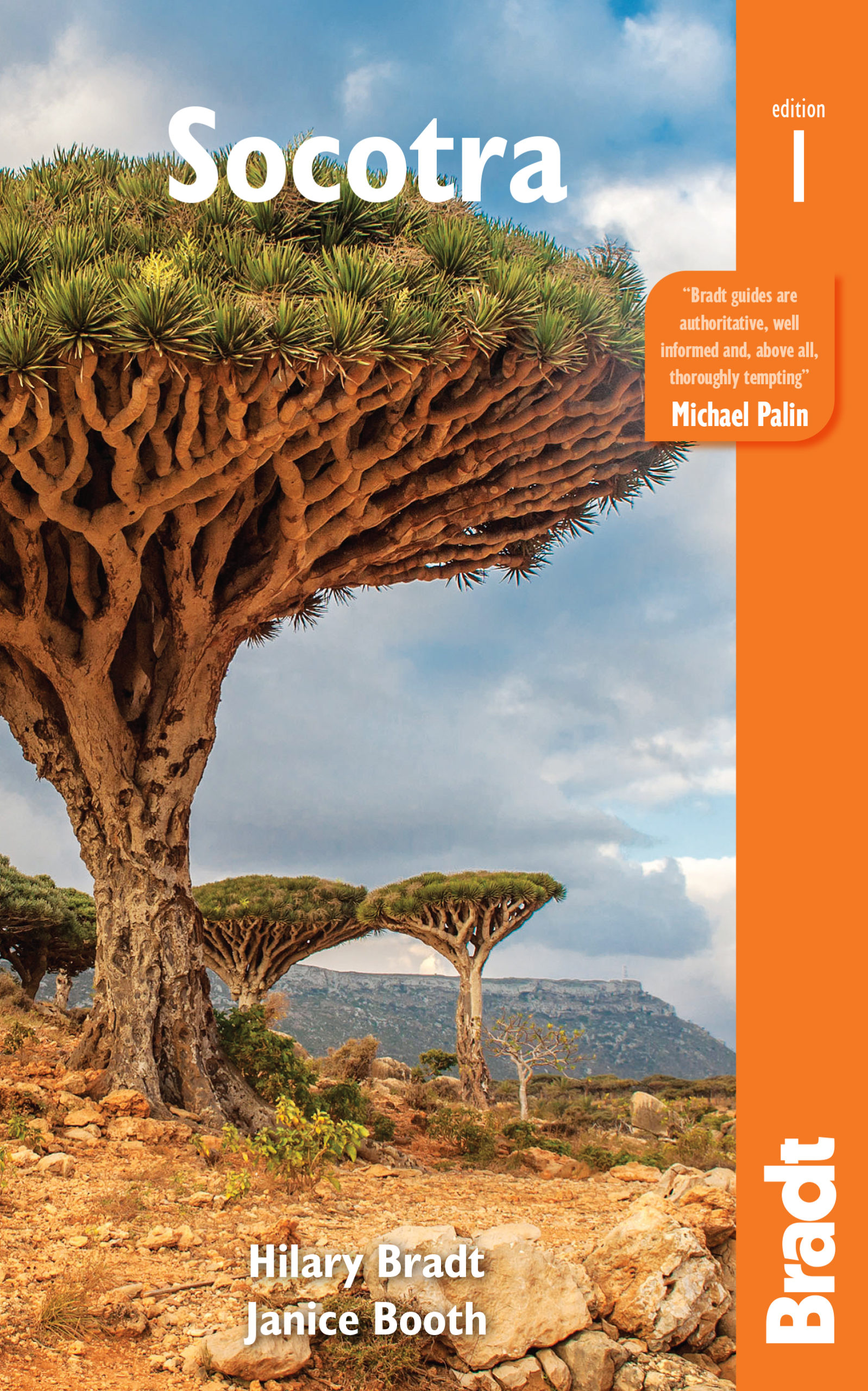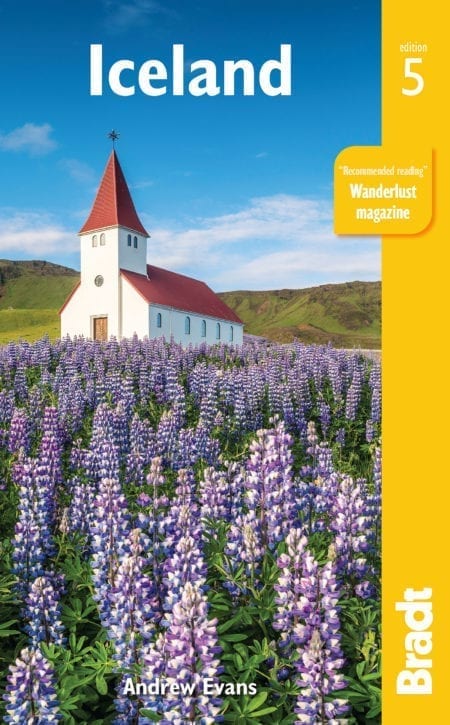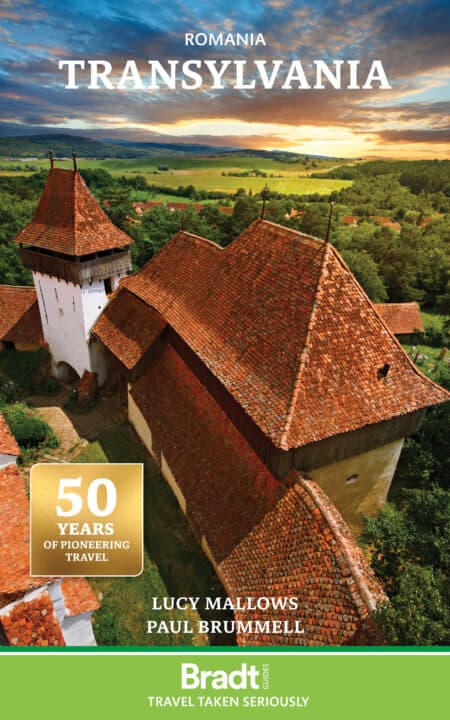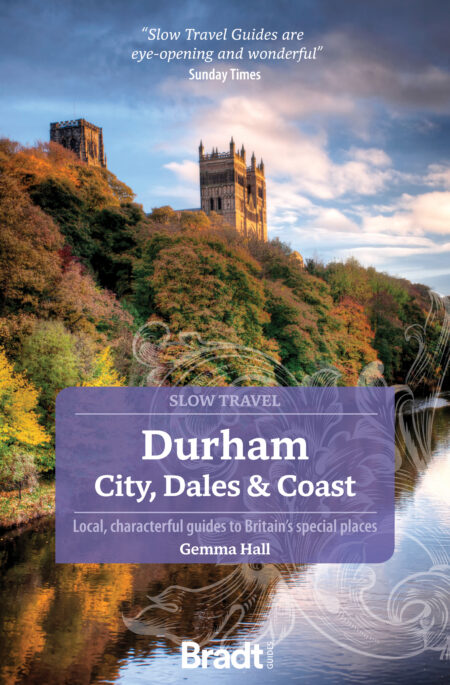Socotra (ebook)
by Hilary Bradt and Janice Booth
£14.16 £12.74
Socotra travel guide: expert travel tips and holiday advice on the largest island of the Socotra (Soqotra) archipelago off the coast of Yemen. Including everything from Hadiboh hotels and restaurants to tour operators, eco-campsites, beaches, snorkelling and diving, wildlife, birdlife and flora including dragon’s blood trees and desert roses.
Edition: 1
About this book
“A much-needed guidebook” – Tony Wheeler, founder, Lonely Planet
This new, full-colour title from Bradt is the first and only guide available to the largest of the four islands that make up the UNESCO World Heritage Site of the Socotra Archipelago in the Arabian Sea, 240 miles offshore from their mother land, Yemen. Everything you might need for a successful trip is covered, from pre-departure planning, getting there, tour operators and where to stay to the full range of information for making the most of your time while there. Background information on history, people, language and culture is followed by an easy-to-follow geographical breakdown covering everywhere from the capital Hadiboh to Ayhaft Canyon National Park, Qaria lagoon, Rosh Marine Nature Sanctuary, Homhil Nature Sanctuary, Terbak village and Hoq Cave, Qalansiyah, Diksam plateau and Firmihin Forest to name just a few of the places detailed. There is also a section on language, an endemic species checklist and suggested sources of further information.
Socotra is unique. Sometimes known as ‘The Galapagos of the Indian Ocean’, the archipelago has an exceptionally large number of endemic species. Of the 220 bird species recorded, 11 are endemic, including the relatively recently identified Socotra Buzzard. Closer to the ground, an estimated 307 plant species are endemic. More than 600 species of insects, some 100 land and freshwater molluscs, around 80 arachnids, some dozen myriapods, four land- and fresh-water crabs, 30 reptiles and 14 mammals have been found to occur, of which all the land snails, 90 % of the reptiles and about 60 % of the spiders are unique to the archipelago.
With its superb beaches and dramatically varied landscapes (mountains, forest, ravines, sand-dunes, beaches, caves .) Socotra is a prime target for tourism, which will need handling with extreme care. Strict regulations are in force to preserve the island’s natural heritage and much of it has protected status, but some unprotected land has already been sold to potential developers. This pristine and relatively unknown little island, so full of natural treasures, may be on the brink of a very different future.
Before ordering ebooks from us, please check out our ebook information.
About the Author
Ever since seeing photos of Socotra on a David Attenborough programme, Hilary Bradt wanted to go there. Her interest in off-the-beaten-track destinations and enthusiasm for wildlife makes it a perfect holiday destination and her experience writing about the natural world, along with her co-author’s interest in history and people, has helped to create a comprehensive and well-balanced book.
Having seen the positive effect that guide books can have on countries recovering from war, Janice Booth was keen to visit and write about Socotra in the hope that this guide may also help to encourage visitors. She was the author of Bradt’s Rwanda and also edited Bradt’s Mali.
Reviews
“A much-needed guidebook” – Tony Wheeler, founder, Lonely Planet
Additional Information
Table of ContentsContents
Introduction
PART ONE GENERAL INFORMATION
Chapter 1 Background information
The Socotra archipelago, Geology, landscape and climate, Natural history, History, Culture and people
Chapter 2 Practical information
When to visit, Highlights, Tour operators, Red tape: visas and travel insurance, Getting there and away , Health, Safety, What to take , Money and budgeting, Getting around, Accommodation, Eating and drinking, Media and communications, Shopping, Cultural etiquette
PART TWO THE GUIDE
Chapter 3 The North
Arrival, Hadiboh, East of Hadiboh, West of Hadiboh
Chapter 4 The East
Protected areas, Qaria lagoon, Homhil Nature Sanctuary, Momi plateau, The pools of Killisan , The Protected Marine Areas, Socotra Folk Museum , Hoq Cave, The eastern tip: Arher, Ras Erissel
Chapter 5 The Centre and the South
The highlands, Wadi Dirhur, Diksam plateau and village, Firmihin Forest, The camel trek, The south coast
Chapter 6 The West and the Outer Islands
Qalansiyah, Detwah beach and lagoon, Shu’ab beach, The outer islands, Sea stacks
Appendix 1 Further information
Appendix 2 Language
Appendix 3 Socotra nature – protected by law
Appendix 4 Checklist of endemic species in this book
Index




